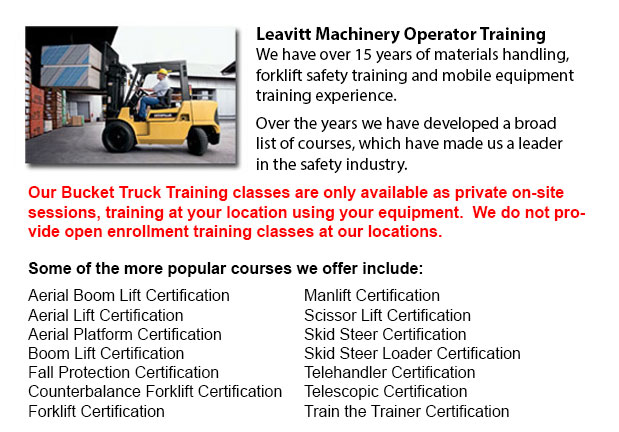
Prince Albert Wheel Loader Operator Training - To be able to pick up considerable cargo, industrial cranes use levers and pulleys. Before, Romans utilized cranes so as to build huge monuments making the origin of these machines at least 2,000 years ago. Several Medieval churches utilized cranes in their structure as well as the Egyptian people may have used them when constructing the pyramids.
New cranes could either be complex or simple, based upon the nature of the use they are able to carry out. For instance, mobile cranes are somewhat simple units. A telescopic boom and even a steel truss mounts its movable platform. A system of levers or pulleys lifts the boom and there is normally a hook hanging. These cranes are normally designed for demolition or earthmoving by changing the hook out with another piece of gadget like for instance a bucket or wrecking ball. Telescopic cranes have a series of hydraulic tubes which fit together to form the boom. These models can even be mobile.
Both specialized or traditional wheels can be meant for railroad track or caterpillar track enabling these boom trucks to be able to move on uneven and unpaved surfaces.
Truck mounted and rough terrain cranes are mobile as well. Outriggers are placed on the truck mounted model in order to enhance stability, while rough terrain cranes comprise a base which tends to resemble the bottom of a 4-wheel drive. These cranes are outfitted so as to work on rough ground making them perfect in the construction trade for instance.
Gantry cranes are actually utilized in order to transport and unload large containers off of ships and trains. They are usually found operating in railroads and ports. Their bases include huge crossbeams that run on rails to be able to raise containers from one spot to another. A portainer is a special kind of gantry which transfers materials onto and off of ships in particular.
Essential to the shipping industry, floating cranes could be attached on pontoons or barges. Being located in water, they are excellent for use in salvaging ships, building bridges and port construction. Floating cranes can handle extremely heavy loads and containers and similar to portainers, they could also unload ships.
Loader cranes are fit onto trailers using hydraulic powered booms so as to load merchandise onto a trailer. If not being utilized, the jointed parts of the boom could be folded down. This type of crane could be also considered telescopic in view of the fact that one section of the boom could telescope for more versatility.
Often found in automated warehouses, stacker cranes tend to follow an automated retrieval system and could function utilizing a remote. These cranes are equipped with a forklift apparatus and could be seen in large automated freezers, obtaining or stacking foodstuff. Using this kind of system enables staff to remain out of that freezing situation.
Tower cranes, often the tallest kind, usually do not have a movable base. They have to be assembled piece by piece. Their base is like a long ladder along with the boom at right angles to the base. These cranes specialize in the construction of tall buildings and are often connected to the inside of the building itself throughout the construction period.
-
Prince Albert Forklift Training Courses
Prince Albert Forklift Training Courses - When forklift operator safety training is tailored for illiteracy, training time is lessened by 50 percent. Lift-truck operator driver safety training evaluation, train the trainer and forklift training certi... More -
Prince Albert Heavy Equipment Training
Prince Albert Heavy Equipment Training - The two most common kinds of heavy equipment training are classed into the categories of equipment; equipment which is fashioned with rubber tires or those with tracks. The tracked vehicle are heavy duty machi... More -
Prince Albert Order Picker License
Prince Albert Order Picker License - Order preparation operation or order picking as it is more usually known is a method utilized within warehouse operations and comprises staff called order pickers. The order picker's duty is to take and collect ar... More -
Operator Safety Training, Re-Qualification Training, In-House Instructor Training in Prince Albert
Used in nearly all warehouse operations, boat yards or industrial construction sites, the lift truck is a very important part to be able to help raise and transfer cargo. The reach feature of a lift truck can help improve the applications which the f... More -
Prince Albert Overhead Crane Certification
Prince Albert Overhead Crane Certification - The overhead crane training certification program is designed to be effective with all those participating regardless of language or literacy restrictions. The course has two parts: a practical training se... More -
Prince Albert Heavy Equipment Training Programs
Prince Albert Heavy Equipment Training Programs - There are different types of equipment that are ready to be utilized at any given time on a construction site. These equipment require mechanics to be able to complete the maintenance tasks, operators... More -
Prince Albert Crane Operator Certification
Prince Albert Crane Operator Certification - The process to allow individuals to operate specific kinds of cranes is to take crane operator certification training to be given certification. The certification process consists of classroom learning, ha... More -
Prince Albert Crane Safety Training
Prince Albert Crane Safety Training - Both crane driver as well as their employers should know all the possible issues associated to the use of an overhead crane. All over North America, there is legislation that provides regulation for the safe oper... More

Forklift Certification Prince Albert
TOLL FREE: 1-888-254-6157
Prince Albert, Saskatchewan
forkliftcertificationprincealbert.com
Email Us
About Us


